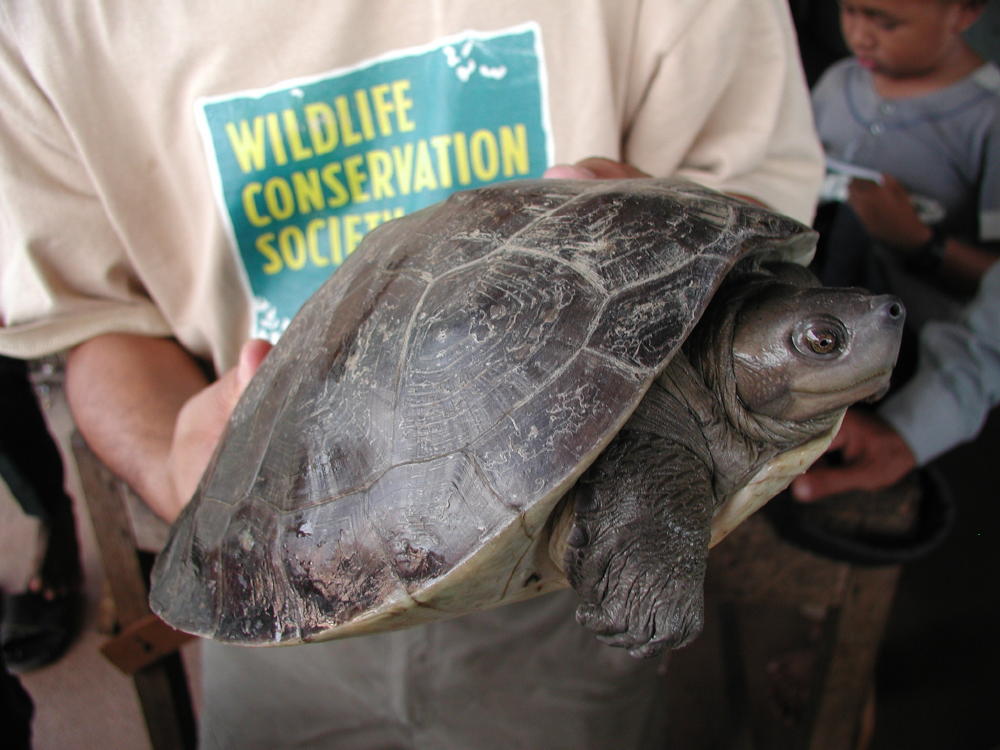Sre Ambel River mangrove turtle. Picture courtesy of WCS.An extremely rare "royal" turtle narrowly escaped a trip to a Chinese soup-pot, thanks to a tiny microchip implanted in its skin, according to experts from the New York-based Wildlife Conservation Society (WCS), who rediscovered the species four years ago in Cambodia.
Wildlife inspectors discovered the 33-pound (15 kg) turtle in a crate of confiscated wildlife in Vietnam, where smugglers planned to send the shipment on to China. The inspectors used a special reading device to detect the microchip, and quickly learned that the turtle came from Cambodia, where it was released two years ago in the Sre Ambel River ago by Cambodia's Fisheries Department. Authorities also called in the Vietnam-based conservation group Wildlife at Risk who confirmed field identification of the turtle.
Following a routine health screening and examination, the turtle was then transported from Vietnam to Cambodia, where it will be soon be released into familiar waters of the Sre Ambel River. WCS works with the National Fisheries Department of Cambodia to protect turtle nesting beaches and reduce local hunting and egg collection to ensure that this small population, with only a handful of nesting females recorded each year, does not become extinct in Cambodia.
"This is a clear and very positive example of how authorities can cooperate across international borders to resolve specific trans-border trade cases", says Doug Hendrie, the Asian turtle coordinator for WCS and Cleveland Metroparks Zoo. "In this case, a very important turtle has returned home."
Once considered the exclusive property of Cambodia's Royal Family, the mangrove turtle is listed on Appendix I of the Convention on International Trade in Endangered Species (CITES), meaning it is critically threatened by trade, and requires permits for both export and import. The species is native to coastal river systems and mangrove forests from India through Bangladesh and Myanmar south along both coasts of peninsular Malaysia, Sumatra (Indonesia), Thailand, and Cambodia.
Hendrie warns that every day thousands of turtles are smuggled across international borders in the region, many of these ending up in China where turtles are eaten or used in traditional medicine.
"The population in Sre Ambel is small and every turtle counts" says Hendrie, who recently returned from Malaysia where scientists and conservationists from around the region met to devise an action plan specifically to protect this mangrove turtle. "I hope that we can see more of this type of positive cooperation between regional governments", adds Hendrie. "This case involves one very important turtle, and is an excellent opportunity to build upon this success."
Source : WCS
 Print Article
Print Article
 Mail to a Friend
Mail to a Friend
